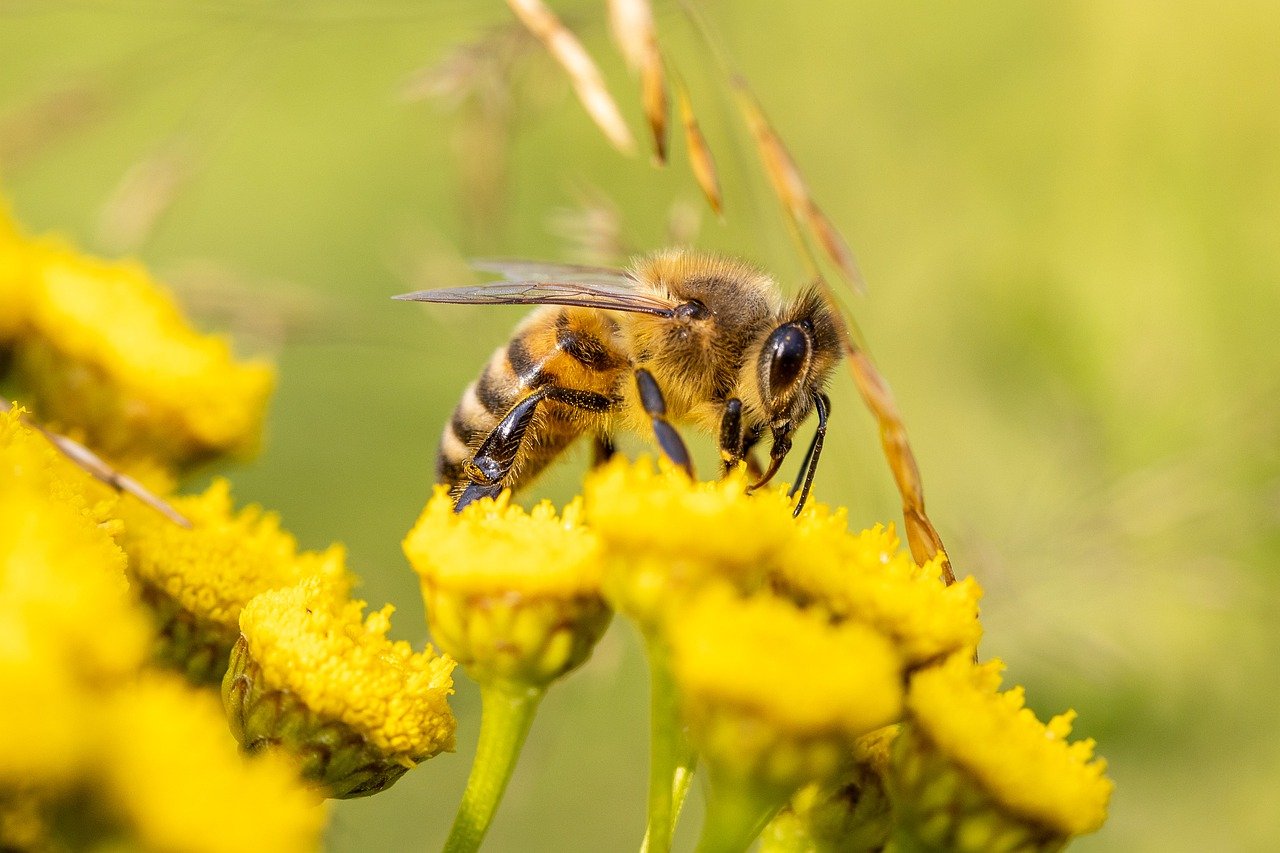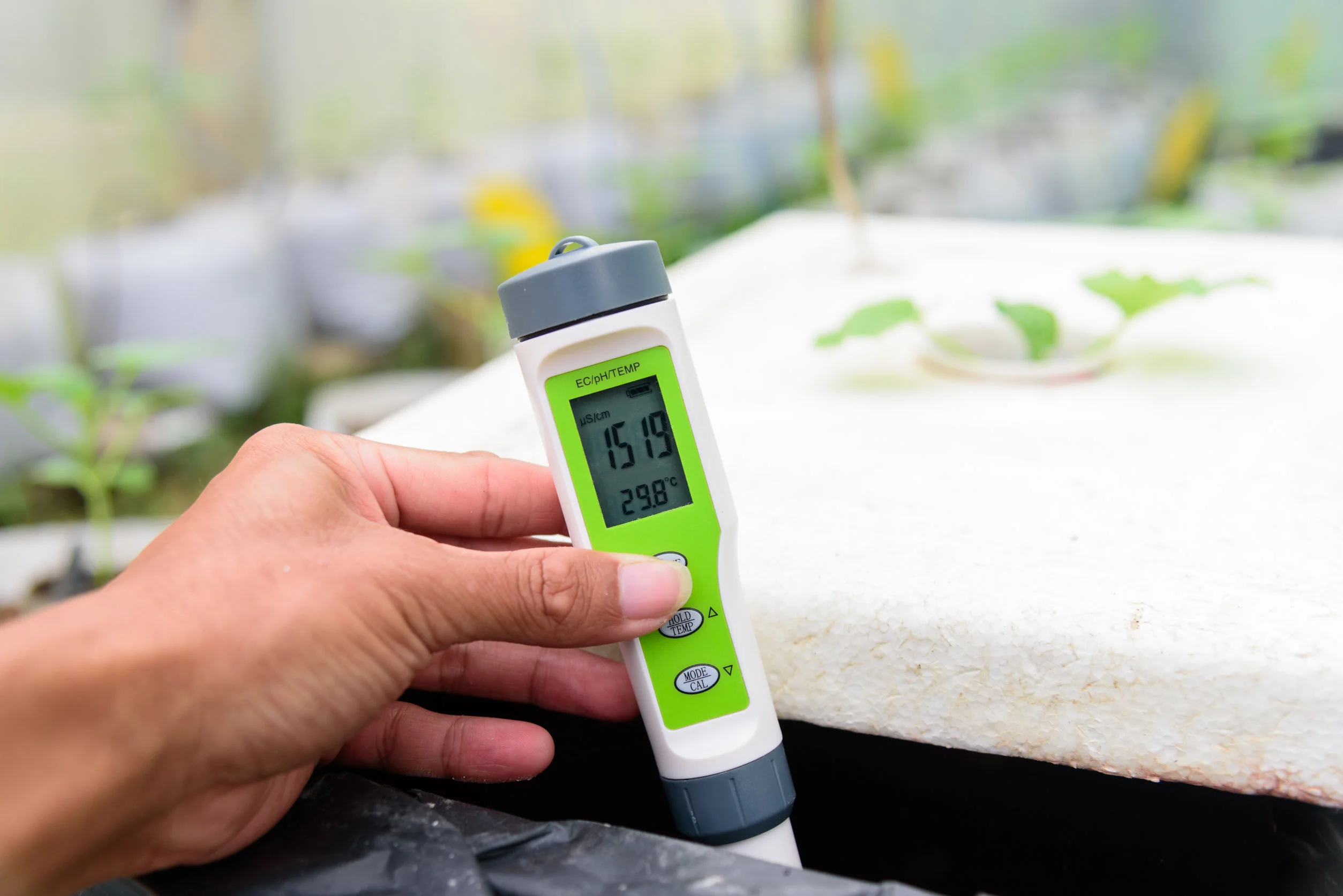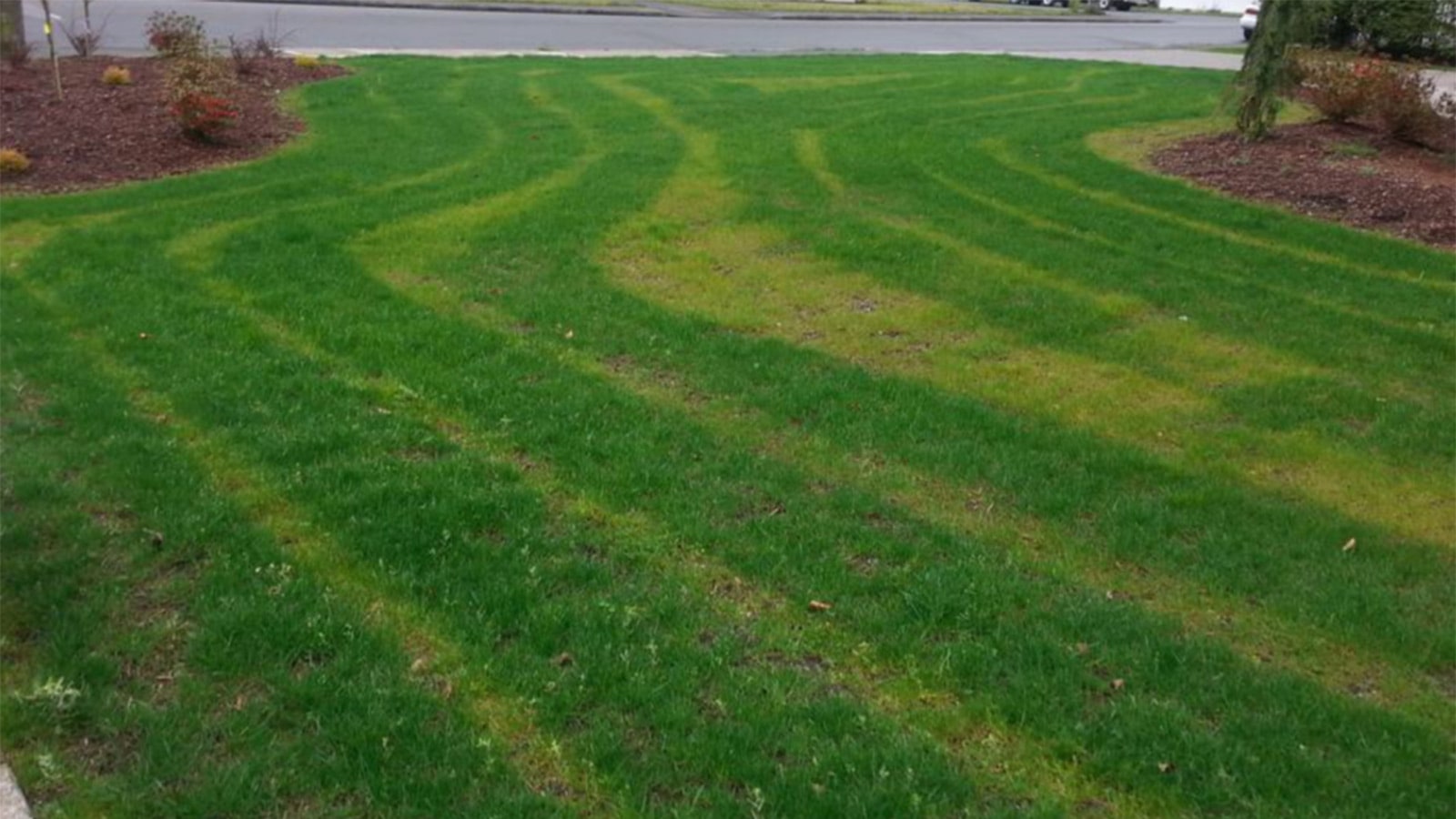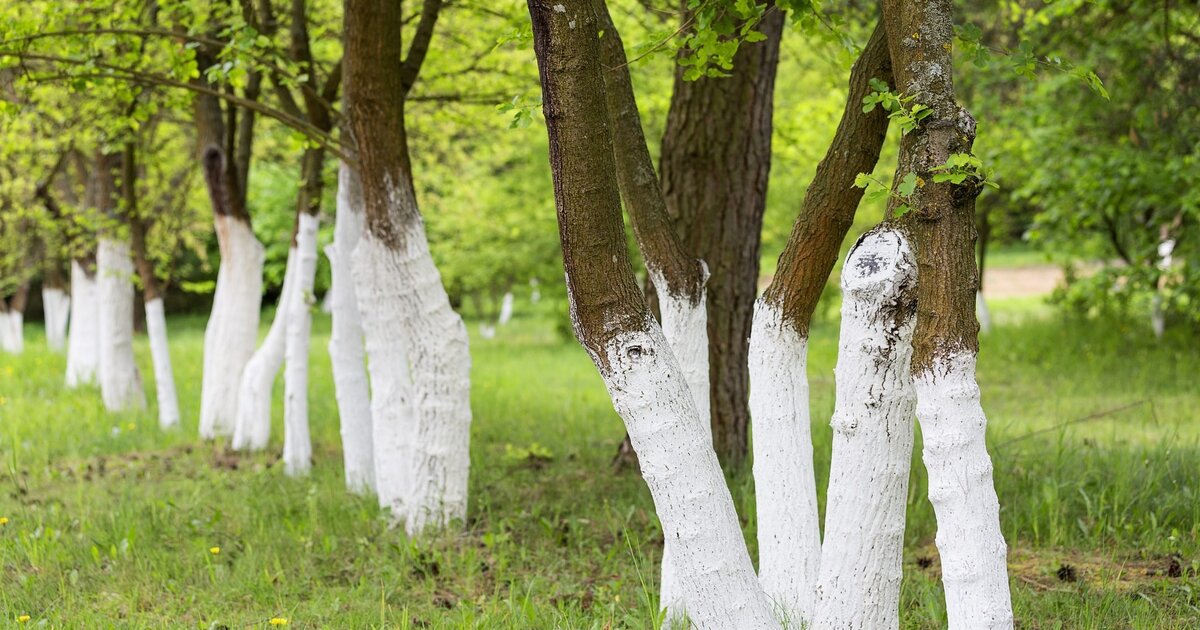Home>Gardening Tips and Tricks>Eco-Friendly Gardening>Why Trees Are Important
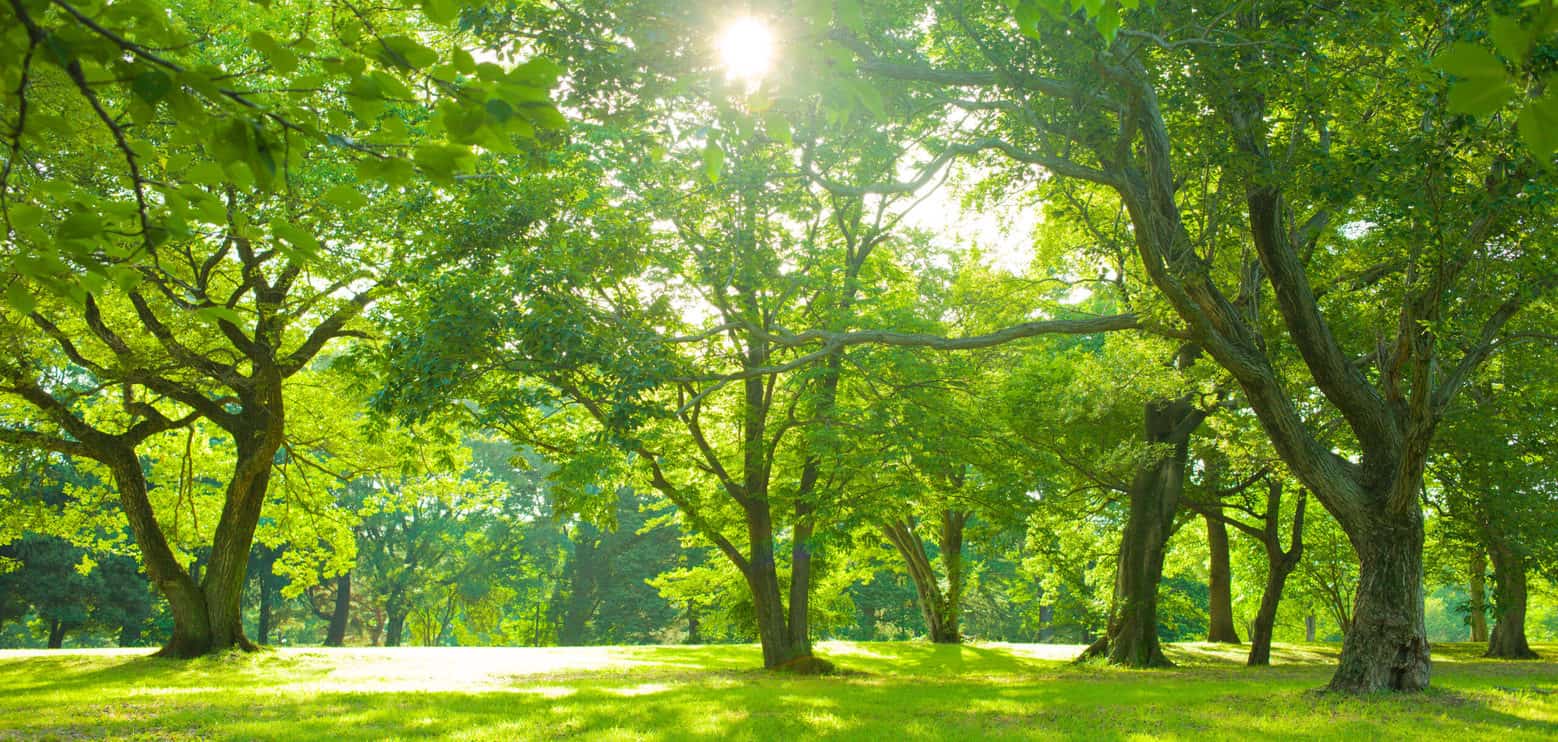

Eco-Friendly Gardening
Why Trees Are Important
Modified: February 8, 2024
Discover the significance of eco-friendly gardening and the importance of trees in sustaining a healthy environment. Enhance your knowledge and contribute to a greener future.
(Many of the links in this article redirect to a specific reviewed product. Your purchase of these products through affiliate links helps to generate commission for Chicagolandgardening.com, at no extra cost. Learn more)
Table of Contents
Introduction
Welcome to the wonderful world of eco-friendly gardening, where you can create a beautiful and sustainable outdoor space while minimizing your impact on the environment. In today’s fast-paced and increasingly urbanized world, it’s essential to prioritize green practices and make conscious choices that contribute to a healthier planet.
One key aspect of eco-friendly gardening is focusing on the use of safe and sustainable practices that minimize harm to the environment and promote biodiversity. By adopting eco-friendly gardening techniques, you can create a thriving ecosystem in your own backyard while reducing your carbon footprint.
In this article, we will explore the importance of trees in eco-friendly gardening and their numerous environmental, social, and economic benefits. Trees are not only aesthetically pleasing but also play a vital role in creating a sustainable environment. From oxygen production to reducing air pollution and preserving water and soil, trees have a remarkable impact on the planet.
Beyond their environmental contributions, trees also offer social and economic advantages. They provide shade, conserve energy, and enhance property values. Additionally, spending time in nature and being surrounded by trees has been proven to have positive effects on our mental wellbeing.
So, whether you are an experienced gardener looking to transition to eco-friendly practices or a beginner embarking on your gardening journey, this article will provide you with valuable insights and inspiration for incorporating trees into your eco-friendly garden.
Environmental Benefits of Trees
Trees are the superheroes of the natural world, tirelessly working to improve our environment and combat climate change. They offer a multitude of environmental benefits that are crucial for maintaining a healthy and sustainable ecosystem.
Oxygen Production: One of the most well-known benefits of trees is their ability to produce oxygen through photosynthesis. They absorb carbon dioxide from the atmosphere and release oxygen, making the air we breathe cleaner and fresher.
Carbon Dioxide Absorption: Trees play a vital role in combating climate change by absorbing carbon dioxide, a greenhouse gas responsible for global warming. They store the carbon in their trunks, branches, and leaves, preventing it from being released back into the atmosphere.
Air Pollution Reduction: Trees act as natural air filters, absorbing pollutants such as nitrogen dioxide, ozone, and particulate matter. They can mitigate the harmful effects of air pollution, which can lead to respiratory problems and other health issues.
Water and Soil Preservation: Trees help conserve water by reducing runoff and erosion. Their root systems absorb rainfall and prevent it from washing away precious topsoil. In addition, trees act as natural water filters, capturing pollutants before they enter our water sources.
Ecosystem Support: Trees provide habitats for a diverse range of wildlife, including birds, insects, and small mammals. They offer food, shelter, and nesting sites, contributing to the overall biodiversity of an area. By preserving and planting more trees, we can protect and support fragile ecosystems.
These environmental benefits highlight the critical role that trees play in creating a sustainable and balanced environment. It is crucial that we recognize their importance and take action to preserve and expand our tree populations.
Oxygen Production
When we think of trees, one of the first things that come to mind is their incredible ability to produce oxygen. Through a process called photosynthesis, trees absorb carbon dioxide from the atmosphere and release oxygen back into the air.
Photosynthesis is the magic that happens in a tree’s leaves. With the help of sunlight, chlorophyll in the leaves converts carbon dioxide and water into glucose and oxygen. The glucose provides energy for the tree, while the oxygen is released as a byproduct. In fact, a single mature tree can produce enough oxygen to meet the daily needs of two to ten people!
This oxygen production is not only crucial for humans but for all living organisms. Every breath we take is filled with oxygen generated by trees and other plants. It’s what keeps our lungs functioning and supports the survival of countless creatures on Earth.
In addition to producing oxygen, trees also help regulate the levels of carbon dioxide in the atmosphere. Carbon dioxide is a greenhouse gas that contributes to climate change and global warming. By absorbing carbon dioxide during photosynthesis and storing it in their biomass, trees help mitigate the impact of greenhouse gases on our environment.
Furthermore, trees can create a microclimate with higher oxygen levels around them. This is particularly true in dense forests, where the oxygen output can be significantly higher than in urban or barren areas. Taking a walk in a forest can feel invigorating and refreshing, thanks to the abundance of oxygen released by the surrounding trees.
To maximize the oxygen production of trees, it’s essential to support their growth and health. Providing proper care, including regular watering, mulching, and adequate space for roots, ensures that trees can carry out their oxygen-producing abilities to the fullest extent.
So, the next time you take a deep breath of fresh air, remember to thank the trees for their tireless work in providing us with life-sustaining oxygen.
Carbon Dioxide Absorption
As the world grapples with the challenges of climate change, one of the most significant contributions that trees make to the environment is their ability to absorb carbon dioxide, a major greenhouse gas. Through the process of photosynthesis, trees take up carbon dioxide from the atmosphere and store it in their trunks, branches, leaves, and roots, effectively reducing the amount of this heat-trapping gas in the air.
Carbon dioxide is released into the atmosphere through human activities such as burning fossil fuels and deforestation. These activities contribute to the greenhouse effect, which leads to global warming and climate change. However, trees act as natural carbon sinks, capturing and storing carbon dioxide in their biomass, thereby helping to mitigate the harmful impacts of greenhouse gas emissions.
Forests play a crucial role in carbon sequestration. Mature trees have the highest carbon storage capacity as they have a larger mass and can store more carbon over time. Old-growth forests, with their tall and dense canopies, are particularly effective at absorbing and storing carbon dioxide. By preserving and expanding our forests, we can significantly reduce the carbon dioxide levels in the atmosphere.
Planting new trees is also essential in the fight against climate change. Young trees absorb carbon dioxide at a faster rate as they actively grow and increase in size. By establishing new forests or reforesting areas that have been cleared, we can create additional opportunities for carbon absorption and storage.
In addition to absorbing carbon dioxide, trees also release oxygen, making them a crucial part of the carbon cycle. Through photosynthesis, trees convert carbon dioxide into oxygen while storing carbon in their tissues. This balance between carbon absorption and oxygen release is key to a healthy and sustainable atmosphere.
It is important to note that while trees are effective at absorbing carbon dioxide, they are not a complete solution to climate change. Implementing sustainable practices, reducing greenhouse gas emissions, and transitioning to renewable energy sources are also vital components of addressing this global challenge. However, trees play a significant role in offsetting carbon emissions and providing a natural solution to climate change mitigation.
By recognizing the importance of carbon dioxide absorption by trees and taking action to protect and expand our tree populations, we can make a positive impact on the environment and work towards a more sustainable future.
Air Pollution Reduction
Air pollution is a major environmental concern that negatively impacts human health, ecosystems, and the overall quality of life. Fortunately, trees serve as nature’s air purifiers, playing a vital role in reducing air pollution.
Trees act as natural filters, trapping and absorbing harmful pollutants from the air we breathe. They are particularly effective at capturing gases such as nitrogen dioxide, ozone, sulfur dioxide, and volatile organic compounds (VOCs). These pollutants are released into the atmosphere as a result of industrial activities, vehicle emissions, and other human-made sources.
One way that trees reduce air pollution is through their leaves. The surface area of tree leaves provides ample opportunity for pollutants to be intercepted and absorbed. The microscopic pores on the leaf surface, called stomata, allow gases to enter the leaf, where they can be converted or stored.
The foliage of trees can intercept up to 70% of airborne particulate matter, such as dust, pollen, and smoke. This helps to improve the air quality in urban areas, where pollution levels are typically higher due to increased human activities and traffic. Trees act as physical barriers, preventing these particles from entering our respiratory system and reducing the risk of respiratory problems and other health issues.
In addition to capturing pollutants, trees also play a role in reducing the formation of ground-level ozone, a harmful pollutant and a component of smog. Trees release volatile organic compounds (VOCs) into the atmosphere, which can react with other air pollutants and help prevent the build-up of ground-level ozone.
The presence of trees in urban environments is especially crucial for mitigating air pollution. Planting trees along roadsides, in parks, and in other urban green spaces can significantly reduce the concentration of pollutants in the air. This is particularly beneficial for vulnerable populations, such as children, the elderly, and those with respiratory conditions, who are more susceptible to the harmful effects of air pollution.
Tree planting initiatives in urban areas have shown positive results in improving air quality. By creating green corridors and urban forests, cities can enhance the overall well-being and health of their residents while combatting the detrimental effects of air pollution.
It is important that we continue to prioritize and support the planting and maintenance of trees as an effective strategy for reducing air pollution. By doing so, we can breathe cleaner air, improve public health, and create a sustainable and healthier environment for future generations.
Water and Soil Preservation
Trees play a crucial role in the preservation of water and soil, two precious resources that are essential for sustaining life on Earth. Through their intricate root systems and canopy cover, trees help prevent water runoff, soil erosion, and maintain the overall health of ecosystems.
When it rains, trees act as natural umbrellas, intercepting and slowing down the fall of raindrops. The leaves, branches, and trunks of trees act as barriers, reducing the force of rainfall and preventing soil erosion. This is especially important in areas with steep slopes or bare soil, where erosion can lead to the loss of fertile topsoil and the contamination of water sources with sediment and pollutants.
The extensive root systems of trees also play a crucial role in water and soil preservation. Tree roots penetrate deep into the ground, creating channels that allow rainwater to infiltrate the soil rather than running off the surface. This process enhances groundwater recharge, replenishing underground water reservoirs and maintaining a sustainable water supply.
In addition to absorbing rainwater, trees help filter it as it percolates through the soil. Tree roots act as natural filters, removing impurities and pollutants, ensuring that only clean water reaches underground aquifers and nearby water bodies. This process of natural filtration helps improve the quality of our water sources and ensures the availability of clean and fresh water for both humans and wildlife.
Trees also play a crucial role in preserving the quality and fertility of soil. The roots of trees bind the soil particles together, helping to prevent soil erosion caused by wind or water. This is particularly important in areas where soil erosion can lead to the degradation of agricultural land and the loss of vital nutrients needed for plant growth.
Moreover, fallen leaves from trees serve as natural mulch, covering the soil and providing a protective layer. This organic matter decomposes over time, enriching the soil with nutrients and enhancing its fertility. The presence of trees and the organic matter they contribute create a healthy soil ecosystem that supports the growth of plants and sustains the overall health of an ecosystem.
By planting and preserving trees, we can effectively combat soil erosion, preserve water resources, and maintain the health and productivity of our land. Ensuring the long-term sustainability of our natural resources requires recognizing the vital role that trees play in water and soil preservation and taking action to protect and expand our tree populations.
Ecosystem Support
Trees are not just solitary beings; they are integral components of complex ecosystems, supporting a rich diversity of plants, animals, and microorganisms. Their presence contributes to the overall health and balance of these ecosystems, creating a thriving web of life.
One of the essential roles of trees in ecosystems is providing habitats for a wide variety of species. The branches and trunks of trees offer ideal nesting sites and shelter for birds and small mammals. Tree canopies provide shade and protection from predators, creating a safe haven for many creatures.
In addition, trees provide food sources for numerous animals. Fruits, nuts, leaves, and flowers are consumed by birds, squirrels, insects, and other wildlife. This availability of food sustains these animals and supports the interconnected food chains within an ecosystem.
Furthermore, the leaf litter and fallen branches from trees serve as organic material that supports the decomposition process. Microorganisms and fungi break down the organic matter, releasing nutrients into the soil and fueling the growth of other plants. This cycle of nutrient recycling is essential for maintaining the fertility of the soil and supporting the growth of diverse plant species.
Trees also contribute to the regulation of temperature and moisture in ecosystems. The canopy of trees provides shade, preventing excessive evaporation of moisture and reducing temperature extremes. This creates microclimates that are beneficial for many species, including plants and animals that are sensitive to temperature fluctuations.
Moreover, trees act as windbreaks, reducing the force of high winds and minimizing soil erosion. This protection is particularly important in coastal areas or regions prone to storms, as trees help prevent damage to other plants and habitats.
By supporting a diverse range of species, trees contribute to the overall biodiversity of an ecosystem. Biodiversity is crucial for the stability and resilience of ecosystems, as it ensures that there are a variety of species performing different roles and functions. The presence of diverse tree species in an area enhances the overall health and sustainability of the ecosystem.
Preserving and protecting trees and their ecosystems is vital for maintaining biodiversity and the overall health of our planet. By recognizing the interconnectedness of all species in ecosystems and supporting tree conservation efforts, we can contribute to a more balanced and sustainable world.
Social and Economic Benefits of Trees
Trees offer not only environmental benefits but also significant social and economic advantages. Their impact goes beyond the natural world and extends to human communities, improving our quality of life and contributing to local economies.
Aesthetic and Psychological Benefits: Trees enhance the beauty of our surroundings, adding color, texture, and life to urban and rural landscapes. Being in the presence of trees has a calming and soothing effect on our mental well-being, reducing stress and promoting relaxation. Whether it’s a park with towering trees or a tree-lined street, the aesthetic and psychological benefits of trees are immeasurable.
Shade and Energy Conservation: The shade provided by trees is invaluable, especially during hot summer months. By creating a natural cooling effect, trees reduce the need for excessive air conditioning, thereby conserving energy and reducing electricity costs. Additionally, strategically planted trees can provide shade to buildings, reducing the heat island effect in urban areas and contributing to energy efficiency.
Improving Property Value: Trees have a positive impact on property values. Areas with well-maintained trees and lush greenery are considered more desirable, and homes surrounded by trees tend to sell at higher prices. Trees provide a sense of serenity and create an attractive environment that appeals to potential buyers and residents.
Economic Opportunities: The economic benefits of trees extend beyond property values. Tree-related industries, such as forestry, timber production, and landscaping, create employment opportunities and contribute to local economies. Additionally, tree tourism, such as visits to botanical gardens and tree-lined walking trails, can generate revenue for communities through ticket sales, tourism services, and local businesses.
Community and Social Cohesion: Trees foster a sense of community and social connection. Public parks and green spaces with trees provide gathering spaces for social activities, events, and recreation. These areas encourage community interaction, outdoor exercise, and a sense of shared responsibility for the natural environment. Trees also play a role in shaping cultural identities and traditions, with certain species being symbolic or significant to local cultures.
Health Benefits: Trees have been linked to a range of health benefits. Studies have shown that spending time in nature, surrounded by trees, can improve mental health, reduce stress levels, and enhance overall well-being. Access to green spaces with trees promotes physical activity, which leads to improved cardiovascular health and reduced rates of obesity and chronic diseases.
The social and economic benefits of trees highlight their importance in creating livable and sustainable communities. By valuing and investing in trees, we can enhance our quality of life, strengthen local economies, and foster a greater connection with nature.
Aesthetic and Psychological Benefits
Trees offer more than just environmental and economic benefits; their presence also provides numerous aesthetic and psychological advantages. Whether in natural landscapes or urban settings, trees enhance the beauty of our surroundings and have a profound impact on our mental well-being.
Enhancing Aesthetics: Trees add visual appeal and splendor to any setting. Their graceful forms, vibrant foliage, and seasonal changes contribute to the overall aesthetic appeal of landscapes. Whether it’s a dense forest, a serene park, or a tree-lined street, the presence of trees creates a sense of depth, texture, and color, enhancing the beauty of our surroundings.
Promoting Relaxation and Stress Reduction: Being in the presence of trees has a calming and soothing effect on our psychological well-being. Scientific studies have consistently shown that spending time in nature, such as walks in the woods or parks, can reduce stress levels, anxiety, and even improve mood and attention span. The peacefulness and tranquility that trees provide offer an escape from the hustle and bustle of daily life, helping us find solace and rejuvenation.
Connecting with Nature: Trees serve as a tangible connection to the natural world. Their presence reminds us of the cycles of life, the changing seasons, and the wonder of the natural environment. By immersing ourselves in nature, with trees as a prominent feature, we can experience a sense of awe, wonder, and a deeper connection to the larger ecosystem.
Improving Mental Well-being: Trees have been shown to have a positive impact on mental health. Research suggests that exposure to nature, including being around trees, can reduce symptoms of depression, improve cognitive function, and boost overall well-being. The calming effect of trees can lower stress hormone levels and promote a sense of peace and serenity.
Creating Inspired Spaces: Trees provide inspiration and stimulate creativity. The natural beauty of trees can spark imagination, encourage artistic expression, and inspire new ideas. Writers, artists, and thinkers throughout history have sought inspiration under the shade of a tree, where the tranquility and harmony of nature can fuel their creative pursuits.
Adding Privacy and Enclosure: Trees also offer a sense of privacy and enclosure in outdoor spaces. They create natural screens, blocking unwanted views and reducing noise levels. This sense of seclusion allows us to feel more secure and intimate in our outdoor environments, enhancing the enjoyment and relaxation of our outdoor activities.
By recognizing and appreciating the aesthetic and psychological benefits of trees, we can prioritize their importance in our environments. Incorporating trees into our landscapes, protecting existing tree ecosystems, and creating green spaces with abundant tree cover can enhance our overall well-being and create visually stunning and inviting environments for all to enjoy.
Shade and Energy Conservation
Trees provide more than just their natural beauty and environmental benefits; they also offer invaluable shade and contribute to energy conservation efforts. The shade provided by trees not only creates a comfortable outdoor environment but also helps reduce energy consumption and promote sustainability.
Natural Cooling: The shade cast by trees provides a natural cooling effect, creating a more pleasant outdoor environment, especially during hot summer months. Whether it’s a tree in a backyard, a row of trees along a street, or a park filled with towering trees, the shade they provide offers respite from the scorching sun and helps lower ambient temperatures.
Reduced Air Conditioning Needs: By providing shade to buildings, trees can significantly reduce the need for air conditioning, especially in sunny regions. When trees are strategically placed around homes and buildings, they act as natural shields, blocking direct sunlight and preventing excess heat from entering indoor spaces. This can result in lower energy consumption and reduced electricity bills, contributing to energy conservation and cost savings.
Lower Heat Island Effect: Trees help mitigate the heat island effect in urban areas. Urban environments tend to have higher temperatures due to the abundance of concrete and asphalt that absorb and radiate heat. The shade provided by trees helps reduce surface temperatures, minimizing heat absorption and the overall heat island effect. This cooling effect can improve the comfort of city dwellers and reduce the energy needed for cooling buildings and pavements.
Wind Break and Insulation: Apart from shading, trees also act as windbreaks, reducing the force of winds and preventing heat loss during colder months. By planting trees strategically, they can serve as natural wind barriers, creating sheltered microclimates around buildings. This can help reduce heat loss through walls and windows, allowing for better insulation and energy conservation in residential and commercial spaces.
Outdoor Energy Efficiency: The shade provided by trees extends beyond buildings. People can enjoy the benefits of tree shade in outdoor spaces such as parks, playgrounds, and recreational areas. Shaded outdoor areas are more comfortable, allowing individuals to spend more time outdoors, reducing the need for artificial cooling systems. This saves energy and encourages a more sustainable lifestyle connected with nature.
By recognizing the shade and energy conservation benefits of trees, we can make conscious efforts to incorporate them into our landscapes. Planting trees strategically around buildings, outdoor spaces, and urban areas can create a cooler and more energy-efficient environment, contributing to sustainable living and reducing reliance on artificial cooling systems.
Improving Property Value
Trees have a remarkable impact on property value and play a significant role in enhancing the desirability and aesthetics of a neighborhood. Homes surrounded by trees are often considered more attractive and tend to have higher property values. The presence of trees can greatly enhance the curb appeal and overall appeal of a property, making it more marketable and sought after by potential buyers.
Visual Appeal: Trees add natural beauty and visual interest to any property. They provide a sense of serenity and create an attractive backdrop against which other elements of the landscape can stand out. Mature, well-maintained trees with lush foliage and vibrant colors can make a property more visually appealing and appealing to potential buyers.
Cooling Effect: Trees provide valuable shade, reducing the heat absorbed by buildings during hot summer months. This natural cooling effect can significantly reduce the need for artificial cooling systems such as air conditioning. Homes with shade-providing trees are perceived as more energy-efficient, as they require less energy for cooling, thereby attracting eco-conscious buyers who value sustainability and lower utility costs.
Privacy and Enclosure: Trees create a sense of privacy and enclosure, especially when strategically planted along property boundaries. They act as natural screens, blocking unwanted views from neighboring properties and reducing noise levels. The feeling of seclusion and privacy afforded by trees can be highly desirable for homeowners, enhancing the overall appeal and value of a property.
Environmental Benefits: The environmental benefits provided by trees, such as air purification, carbon dioxide absorption, and stormwater runoff reduction, can positively impact a property’s value. Homebuyers today are increasingly concerned about sustainability and the environment, and trees can make a property more attractive to these eco-conscious buyers.
Community Benefits: Neighborhoods with abundant tree cover and well-maintained green spaces tend to foster a sense of community and pride. Properties located in such neighborhoods are often perceived as more desirable and command higher prices. Access to parks and green spaces created by trees provides residents with recreational opportunities and a higher quality of life, further enhancing the value of properties in the area.
Lower Maintenance Costs: Trees can help lower maintenance costs for homeowners. Depending on their location, trees can provide natural windbreaks, reducing the wear and tear on homes caused by strong winds. They can also help prevent erosion, protecting properties from potential damage. Additionally, mature trees require minimal maintenance, making them cost-effective assets that can positively impact a property’s value.
Recognizing the value that trees bring to a property is important for homeowners, buyers, and real estate professionals alike. By preserving and planting trees, we can enhance property values, improve neighborhoods, and create a more appealing and sustainable living environment.
Conclusion
As we have explored throughout this article, trees are vital not only for their environmental contributions but also for the numerous social and economic benefits they provide. From their role in oxygen production and carbon dioxide absorption to their ability to reduce air pollution, preserve water and soil, and support diverse ecosystems, trees are true champions of the natural world.
Beyond their environmental benefits, trees enhance our lives in numerous ways. They provide shade and contribute to energy conservation, improving the comfort and reducing the energy consumption of our homes and outdoor spaces. The aesthetic and psychological benefits of trees cannot be overstated, as their presence creates calming and inspiring environments that positively impact our mental well-being.
From a social and economic perspective, trees play a crucial role in community building, creating green spaces where people can gather, connect, and enjoy nature. They also contribute to the economic well-being of communities by providing employment opportunities in industries related to forestry, landscaping, and tree tourism.
It is essential that we recognize the value of trees and take proactive steps to protect and preserve them. Planting trees, supporting reforestation efforts, and conserving existing tree ecosystems are essential for our planet’s health and our own well-being. By incorporating eco-friendly gardening practices and prioritizing the use of sustainable solutions, we can enhance the positive impact of trees and create a more sustainable future.
So, whether you’re a seasoned gardener or just starting out, consider the importance of trees in your eco-friendly gardening efforts. Plant a tree, support local tree initiatives, and advocate for the preservation of existing tree populations. By doing so, you’ll not only contribute to a healthier environment but also enjoy the countless benefits that trees bring to our lives and communities.
